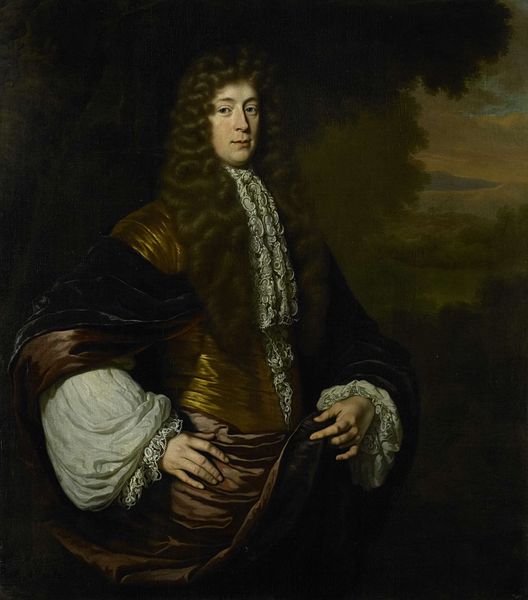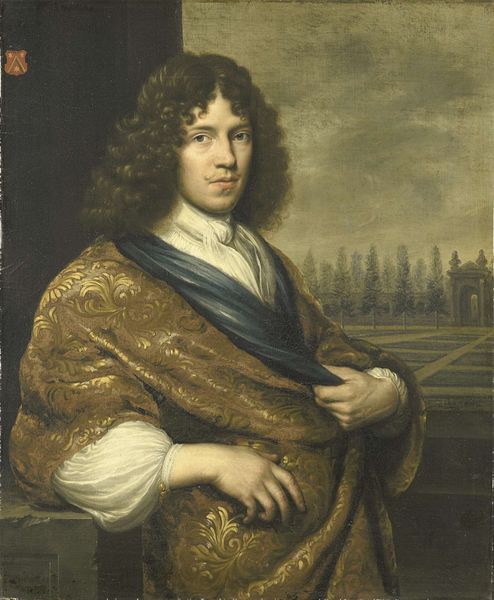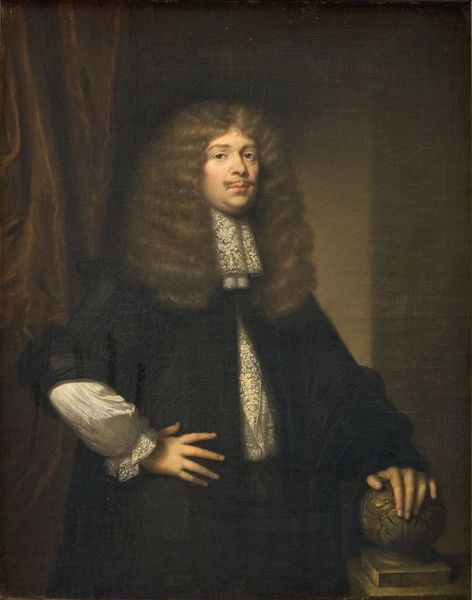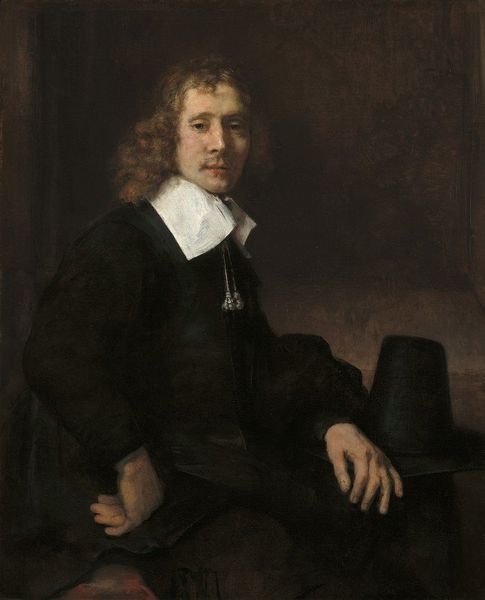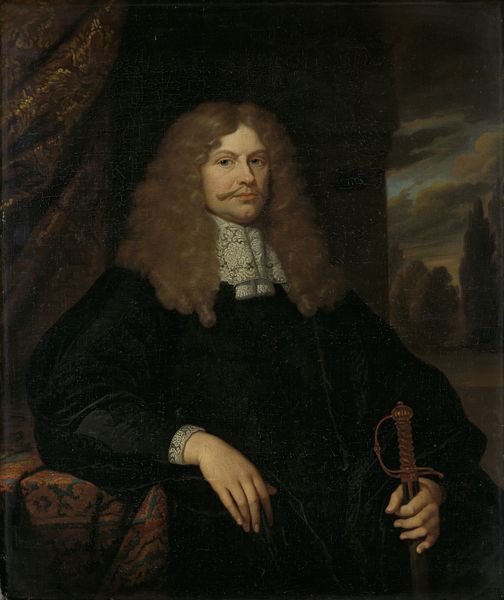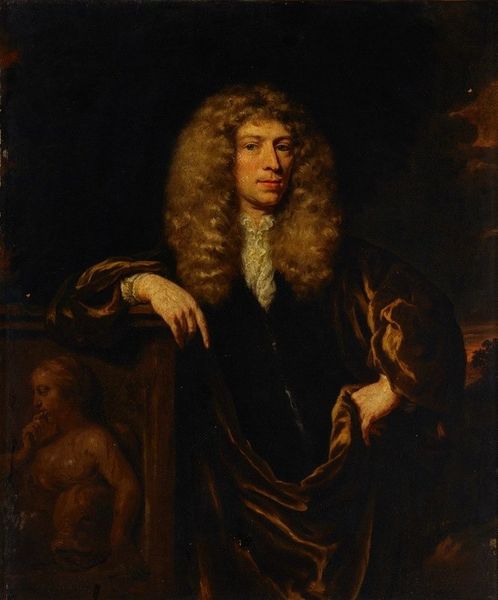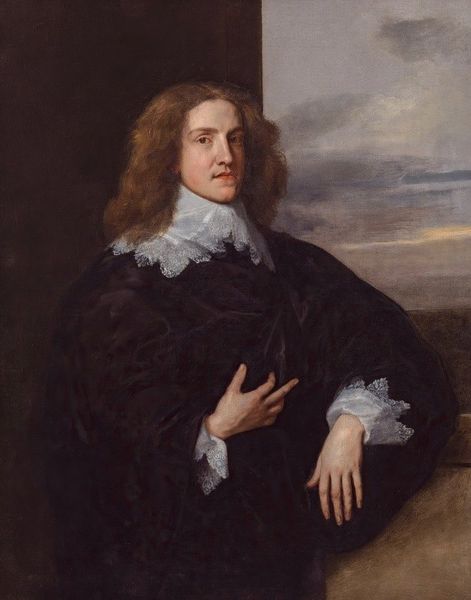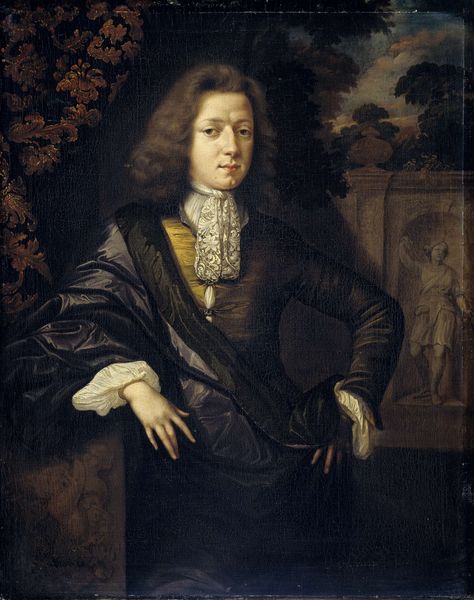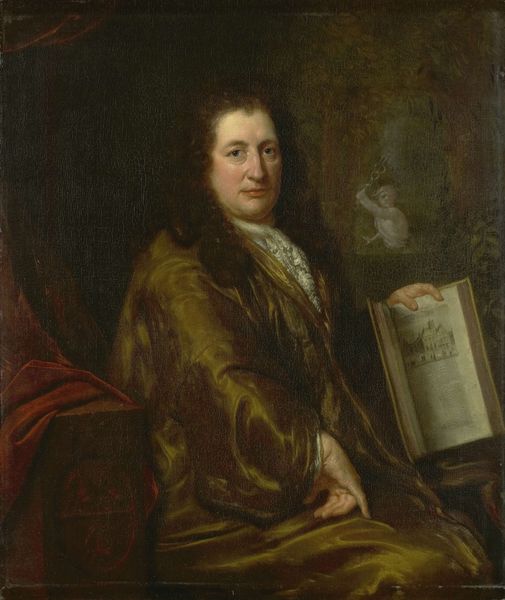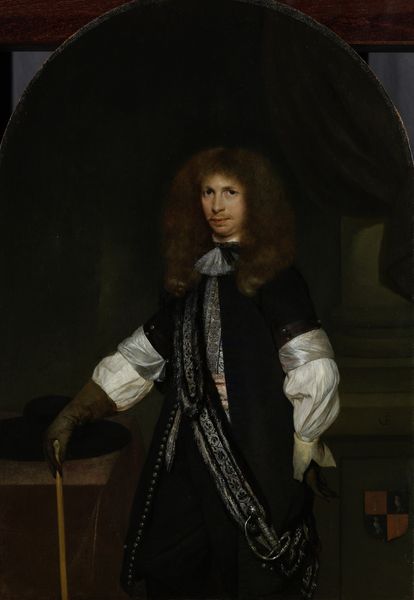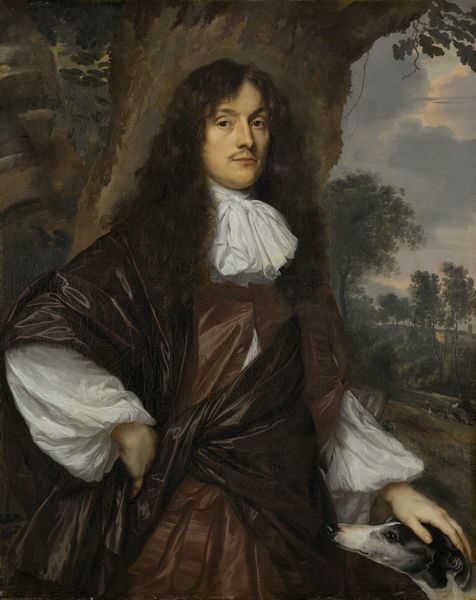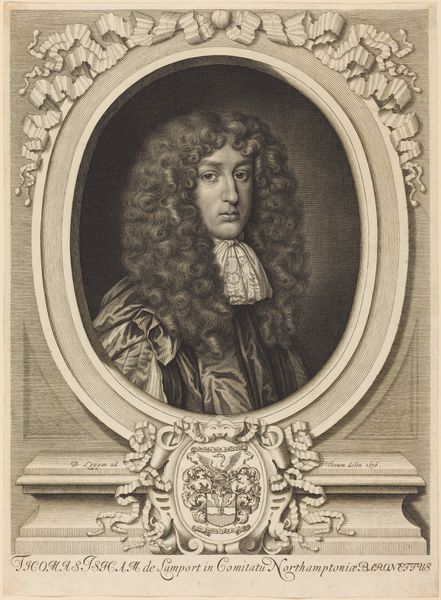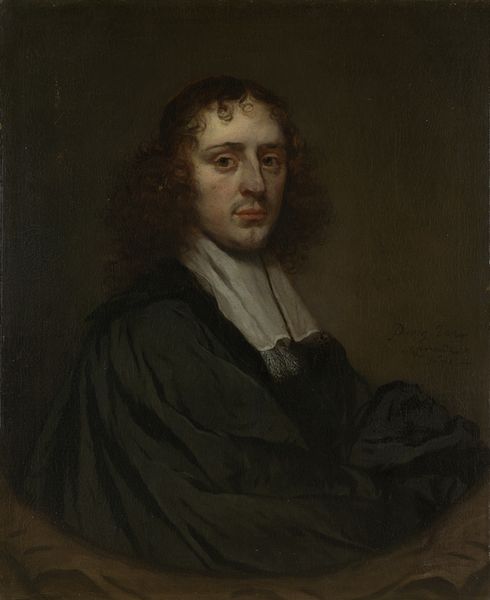
Portrait of Pieter de Graeff (1638-1707), lord of Zuid-Polsbroek, Purmerland, and Ilpendam. Alderman of Amsterdam 1663
0:00
0:00
#
character portrait
#
portrait image
#
portrait reference
#
portrait head and shoulder
#
portrait drawing
#
facial portrait
#
portrait art
#
fine art portrait
#
celebrity portrait
#
digital portrait
Dimensions: height 51 cm, width 36 cm
Copyright: Rijks Museum: Open Domain
Curator: This is Caspar Netscher’s 1663 portrait of Pieter de Graeff, a prominent figure in Amsterdam's Golden Age. It's currently housed in the Rijksmuseum. What's your first take on it? Editor: Intimacy, perhaps even melancholy, even though he was clearly somebody powerful. The low key tones contribute, but also his face and stance make him feel strangely accessible despite all the finery. Curator: It’s fascinating you pick up on that accessibility. De Graeff held considerable power, so what pictorial cues might Netshcer be using to humanize his sitter? Editor: Well, there’s the lack of overt symbolism of status – no grand architecture, opulent fabrics, or regal poses here. Instead, it is all shadows, and darkness. But consider also how he holds those gloves – it feels more like a fidget than a display of wealth. What is behind him anyway? That curtain has a sense of incompleteness as a symbol of power. It isn't just a pretty backdrop. Curator: I see your point about the gloves. Interesting that you focused on the partially drawn curtains. That's likely a theatrical allusion. Curtains and drapes served a symbolic role in Dutch portraiture of the era to suggest a world stage, or to invite the viewer into the subject’s world. Editor: But the way it stops? Is it not an unfinished narrative then? Also look at that tiny shield at the very bottom. What does it signal, since its in the dark almost hidden from the plain view? Curator: Indeed, heraldry features family emblems to express lineage and values. So in an unusual manner, while this work whispers of grandeur, it refuses the shout, choosing nuance and restraint. What’s your feeling about that now? Editor: I think it adds to that air of reflective humanity I first perceived. It presents power as something tempered, considered, and maybe even a little burdened. It is as if it almost hints at the transient nature of worldly authority and reminds us all that power comes and goes. A very touching testament in the end.
Comments
No comments
Be the first to comment and join the conversation on the ultimate creative platform.
